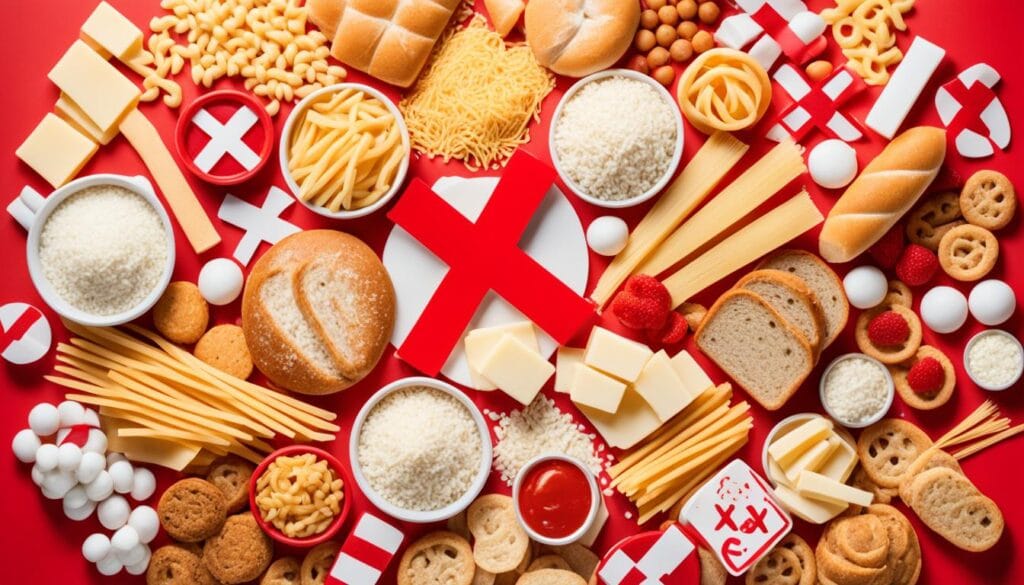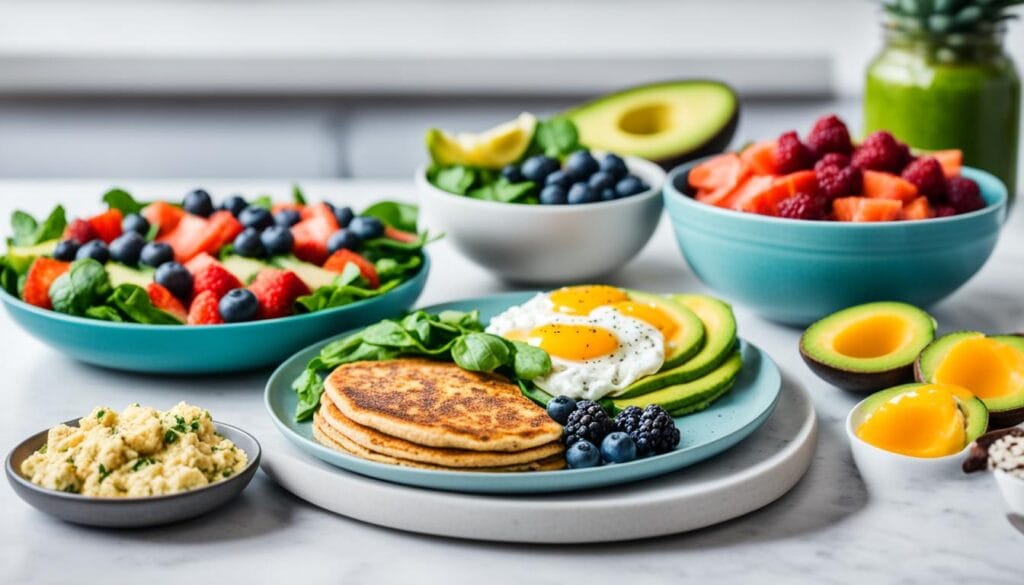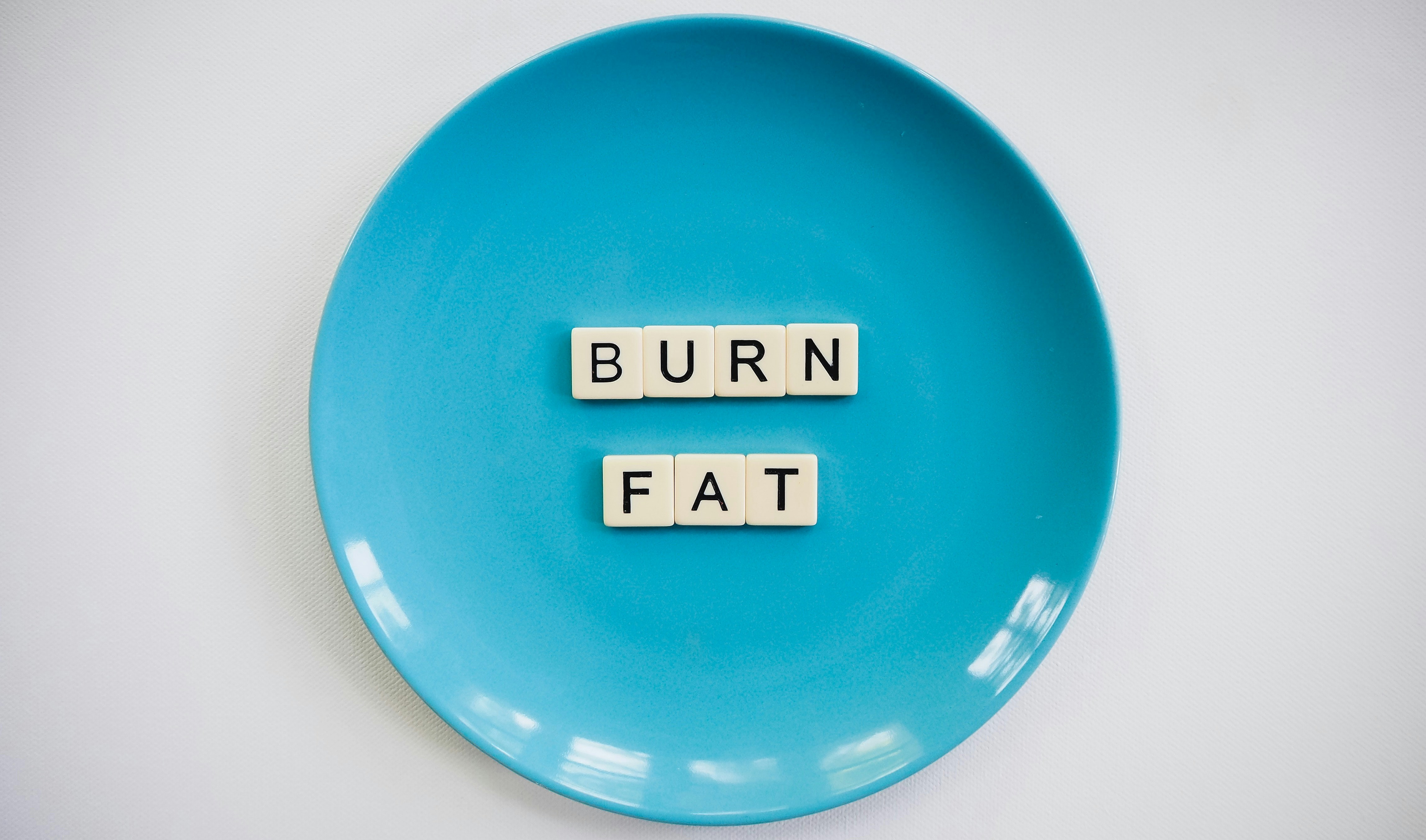Ever thought about how the keto diet could boost your energy and help you lose weight? The Keto Diet is known for its focus on low-carb recipes and high-fat foods. It’s popular for changing how your body uses energy, moving from carbs to fat and ketones. This guide will cover the basics, benefits, and how to live the keto way. It’s perfect for beginners or those looking to improve their keto diet.

Key Takeaways
- Understand the core principles of a ketogenic lifestyle.
- Discover the benefits of low-carb recipes.
- Learn how high-fat living can improve your metabolism.
- Gain insights into effective meal planning.
- Overcome common challenges in the initial stages.
What is the Keto Diet?
The ketogenic diet is a way of eating that cuts down on carbs and ups the fat intake. This helps the body switch to using fat for energy instead of carbs. It’s called ketosis.
Definition and Overview
This diet focuses on eating 70% fats, 20% proteins, and 10% carbs. By eating more fats and fewer carbs, people can enter ketosis. This state is good for losing weight and feeling more energetic.
Key Principles of the Keto Diet
- Reducing carbohydrate intake to encourage ketosis
- Increasing healthy fats to supply energy during ketosis
- Moderate protein consumption to support muscle maintenance
The keto diet is all about the right balance of nutrients. Eating fewer carbs and more fats helps keep you in ketosis. This leads to better focus and steady blood sugar levels.
Benefits of the Keto Diet
The Keto Diet has many benefits for your health. It helps with *weight loss*, keeps blood sugar levels in check, and boosts metabolic health. This diet has become very popular because of these advantages.
Weight Loss
The Keto Diet helps you lose weight better than low-fat diets. You don’t need to count calories because it changes your body’s energy source to fats. This leads to eating less and burning more fat.
Blood Sugar Control
This diet also helps manage blood sugar levels. By eating fewer carbs, it makes your body more sensitive to insulin. This is great for people with type 2 diabetes or prediabetes. It can make blood sugar levels more stable and might cut down on medication.
Other Health Benefits
The Keto Diet has more health perks too. It could help with heart disease, some cancers, Alzheimer’s, and PCOS. These benefits make it a good choice for improving your *metabolic health*.
| Benefit | Details |
|---|---|
| Weight Loss | Effective without calorie counting, natural appetite reduction, increased fat burning |
| Blood Sugar Control | Enhanced insulin sensitivity, stable blood glucose levels, reduced medication dependency |
| Other Health Benefits | Improved heart health, potential cancer prevention, neurological benefits, better management of PCOS |
How Does Ketosis Work?
Learning about ketosis can help you get and keep this *metabolic state*. When you’re in ketosis, your body stops using glucose for energy. Instead, it uses fat. This fat-burning makes ketones, which are an alternative fuel.
The Science Behind Ketosis
Ketosis is a natural *metabolic state* that happens when you eat fewer carbs. This makes your body use fat for fuel. With carbs cut down to 20 to 50 grams a day, your liver turns fatty acids into ketones.
These ketones become your main energy source. This leads to a *fat-burning* mode that helps with weight loss and boosts health.
How to Achieve Ketosis
To get into ketosis, you need to change your diet a lot. Here are some steps to follow:
- Cut down on carbs to 20-50 grams a day.
- Eat more healthy fats like avocados and nuts.
- Add moderate amounts of protein to your meals.
- Try intermittent fasting to speed up *fat-burning*.
- Drink plenty of water and keep an eye on electrolytes.
Signs of Being in Ketosis
Knowing the signs of ketosis shows you’ve reached this *metabolic state*:
- Increased thirst and dry mouth
- Less hunger and appetite
- Short-term tiredness and headaches
Steps to Start a Keto Diet
Starting a keto diet needs careful planning and knowing key steps. It helps whether you’re new or experienced. Having the right tools and strategies makes it easier.
Preparing Your Pantry
Before starting keto, fill your pantry with the right foods. Remove items like bread, pasta, and sweets. Add low-carb items like almond flour, coconut oil, and sugar-free sweeteners instead.
Meal Planning
Good meal planning is crucial for a keto diet. Plan your meals to keep the right balance of fat, protein, and carbs. Try different keto recipes like avocado and egg bowls, zucchini noodles, and cauliflower rice.
This variety makes your diet fun and healthy.
Overcoming Initial Challenges
Starting keto might bring challenges like the “keto flu,” with symptoms like fatigue and headaches. To beat these, drink plenty of water, replenish electrolytes, and eat enough salt. Slowly cutting carbs helps your body adjust to the new diet.
Foods to Eat on a Keto Diet
The Keto Diet focuses on eating keto-friendly foods for balance and ketosis. You should eat healthy fats, proteins, and low-carb vegetables. Also, choose the right snacks and drinks.
Healthy Fats
Healthy fats are key in the keto diet. Foods like avocado, olive oil, and fatty fish are great choices. Full-fat dairy products, such as cheese and yogurt, are also good for healthy fats.
Proteins
Protein is important but eat it in moderation. Choose high-quality sources like pasture-raised eggs and lean beef. These help with muscle health without raising blood sugar.
Low-Carb Vegetables
Low-carb veggies are essential for vitamins and fiber. Spinach, kale, broccoli, and zucchini are great options. They help you stay within your carb limits.
Snacks and Beverages
You can snack on keto-friendly foods too. Almonds and chia seeds are great for quick snacks. Drink water, coffee, and tea without sugar to stay energized.
Foods to Avoid on a Keto Diet
To stay in ketosis, watch what you eat closely. High-carb foods can stop weight loss and mess with your blood sugar. It’s key to avoid them.

Sugary Foods
Avoid sugary foods like candy, desserts, and snacks on the keto diet. They have lots of carbs that can kick you out of ketosis. Choose low-carb treats instead.
Grains and Starches
Grains and starches, like wheat, rice, and potatoes, are full of carbs. They’re not good for keto. Try cauliflower rice and zucchini noodles as substitutes.
High-Carb Fruits
Some fruits are off-limits on keto because they’re high in sugar and carbs. Bananas, apples, and grapes are examples. Berries are a better choice in moderation.
Processed Foods
Processed foods often have hidden sugars and carbs that are bad for keto. Always check the labels to avoid these foods. Eat more whole, unprocessed foods instead.
| Food Category | Examples |
|---|---|
| Sugary Snacks | Candy, Desserts, and Sweetened Beverages |
| Grains and Starches | Wheat, Rice, and Potatoes |
| High-Carb Fruits | Bananas, Apples, and Grapes |
| Processed Foods | Packaged Snacks and Ready Meals |
Potential Side Effects
The keto diet has many health benefits, but some people may face keto side effects when they start. Knowing about these issues can help you deal with them better and keep up with your diet.
Keto Flu
The keto flu is a common keto side effect. It happens when your body gets used to using fat for fuel instead of carbs. Symptoms include headaches, feeling tired, nausea, and being easily annoyed. Drinking enough water and keeping your electrolytes balanced can make these symptoms better and help you adjust to ketosis.
Digestive Issues
Some folks might get constipation or diarrhea when they start a keto diet. These issues usually come from changes in fiber intake and digestive health. Eating more low-carb veggies and drinking plenty of water can help. Adding fermented foods to your diet can also support your gut health.
Managing Side Effects
To handle keto side effects, make sure you drink lots of water. It’s also important to eat enough sodium, potassium, and magnesium to keep your electrolytes balanced. This can prevent muscle cramps and feeling tired. Eating foods high in fiber can also help your digestive health and reduce stomach discomfort.
Different Types of Keto Diets
People are finding different ways to follow the ketogenic lifestyle. There are various adaptations to fit individual needs and activities. Knowing about the different types of ketogenic diets can help you pick the best one for your goals and lifestyle.
Standard Keto Diet (SKD)
The Standard Keto Diet (SKD) is the most popular type. It focuses on eating low-carb, high-fat foods to stay in ketosis. This diet is great for those who want simple guidelines and don’t need special adjustments for exercise.
Cyclical Keto Diet (CKD)
The Cyclical Keto Diet (CKD) mixes in more carbs at certain times. You follow 5-6 days of SKD and then 1-2 days with more carbs. Athletes or people who need carbs for intense workouts prefer this diet.
Targeted Keto Diet (TKD)
The Targeted Keto Diet (TKD) lets you eat carbs before or after exercise. This helps athletes perform better without stopping ketosis. It’s perfect for those who want to keep burning fat while training hard.
High-Protein Keto Diet
The High-Protein Keto Diet boosts protein intake while keeping carbs low and fats moderate. Bodybuilders or anyone needing more protein for muscle growth like this diet. It’s a good choice for a keto lifestyle.
| Keto Diet Type | Carb Intake | Primary Use |
|---|---|---|
| Standard Keto Diet (SKD) | Consistently low | Simplicity and weight loss |
| Cyclical Keto Diet (CKD) | 5-6 days low, 1-2 days high | Athletic performance |
| Targeted Keto Diet (TKD) | Carbs around workouts | High-intensity training |
| High-Protein Keto Diet | Low carb, high protein | Muscle maintenance or growth |
Intermittent Fasting and Keto
Combining intermittent fasting with keto can lead to faster weight loss and better ketosis. These two methods work well together to improve your health and help you reach your fitness goals.
Benefits of Combining Intermittent Fasting with Keto
Intermittent fasting and keto boost your metabolism and help you burn fat better. They keep you in a fat-burning state by keeping insulin levels low. This makes your body use stored fat for energy. You may also notice:
- Enhanced mental clarity and focus
- Improved metabolic health
- Greater satiety and reduced cravings
- More efficient weight management
Popular Fasting Protocols
There are several fasting methods that work well with keto. The most common ones are:
| Fasting Protocol | Description |
|---|---|
| 16/8 Method | Fast for 16 hours and eat within an 8-hour window. |
| 5:2 Diet | Eat normally for 5 days, restrict calories to 500-600 for 2 non-consecutive days. |
| 24-hour Fast | Fast for a full 24 hours once or twice a week. |
Tips for Success
To succeed with fasting and keto, plan well and listen to your body. Here are key tips to help you:
- Stay Hydrated: Drink lots of water, herbal teas, and electrolytes to avoid dehydration.
- Consume Nutrient-Dense Foods: Eat whole foods full of vitamins, minerals, and healthy fats during your eating times.
- Listen to Your Body: Pay attention to when you feel hungry and adjust your fasting as needed.
- Plan Your Meals: Make your meals ahead to avoid giving in to temptation and stay on your diet plan.
Keto Diet for Athletes
The keto diet can greatly benefit athletes by improving their performance and managing energy and inflammation. By eating a low-carb, high-fat diet, athletes can train to use fat as their main energy source. This is great for endurance and can make exercising on keto better.
Performance Benefits
One big plus for athletes on the keto diet is better endurance. Using fat for fuel means they have a steady energy supply, helping them avoid running out of steam during long activities. This makes them more efficient at burning fat for energy, boosting their performance on keto.
The keto diet also lowers inflammation, which speeds up recovery and boosts long-term performance. Many athletes find they think more clearly and stay focused when on the keto diet.
Adjusting Macros for Workouts
Athletes need to tweak their macronutrient ratios to match their energy needs. A good mix for keto diet athletes might be:
| Macronutrient | Percentage |
|---|---|
| Fat | 70-75% |
| Protein | 20-25% |
| Carbohydrates | 5-10% |
This mix helps athletes have enough energy for workouts while staying in ketosis. It’s key to check and adjust these ratios based on how well they perform on keto and their activity levels.
Common Challenges
Despite its benefits, the keto diet for athletes comes with challenges. One big one is a drop in performance at first. This can be lessened by slowly cutting carbs and giving the body time to switch to fat for fuel.
Another issue is keeping up with hydration and electrolytes, which can be harder on a keto diet. Athletes must make sure they get enough sodium, potassium, and magnesium to stay at their best during workouts on keto.
Keto Diet and Diabetes Management
The ketogenic diet has shown promising results in managing diabetes. It focuses on low-carb intake and healthy fats. Many people have seen big improvements in their blood sugar levels.
Effects on Blood Sugar
The keto diet helps manage blood sugar well. It’s great for those with type 2 diabetes or prediabetes. By eating fewer carbs, blood glucose levels stay stable.
This change also makes insulin work better and lowers hemoglobin A1C levels. Hemoglobin A1C is a key indicator of blood sugar control over time.
Research Studies
Many studies support the keto diet’s benefits for diabetes control. They show it can help reverse type 2 diabetes symptoms. It can also reduce the need for medication and boost metabolic health.
This research has made the keto diet more popular for diabetic patients.
Advice for Diabetes Patients
People with diabetes should be careful when trying the keto diet. It’s important to keep an eye on blood sugar levels. You might need to change your diabetes medication, so always check with a doctor first.
Talking to a healthcare professional before starting a new diet is key. This ensures it’s safe and works well for you.
Keto Recipes and Meal Ideas
Starting a ketogenic diet means you can enjoy tasty and healthy meals. You’ll find everything from tasty breakfasts to yummy snacks. These keto recipes make your meals fun and keep you full.

Breakfast Recipes
Starting your day with a good meal is key. Try making omelets with veggies and cheese, or avocado bowls with nuts. These meals are both tasty and keep carbs low.
Lunch Recipes
For lunch, choose meals that are low in carbs but filling. Go for salads with fatty fish like salmon or grilled chicken with lots of veggies. These options are both healthy and delicious.
Dinner Recipes
Dinner is a great time to try out high-fat recipes. Think about making dishes with lots of protein like steak with sautéed spinach. Or try a cheesy cauliflower bake with roasted meats.
Snack Ideas
Snacks should be easy and fun to make. Try using cheese cubes, olives, or homemade keto bars. These snacks are quick and won’t mess with your low-carb diet.
| Meal | Recipe | Main Ingredients |
|---|---|---|
| Breakfast | Avocado Bowl | Avocado, Nuts, Cheese |
| Lunch | Salmon Salad | Salmon, Low-Carb Veggies |
| Dinner | Steak & Spinach | Steak, Spinach, Healthy Fats |
| Snack | Homemade Keto Bars | Nuts, Coconut Oil, Cocoa |
Common Mistakes to Avoid on Keto
Starting a keto diet can change your life, but it’s easy to make mistakes. Here are some key mistakes to avoid for a better keto journey.
Not Tracking Carbs
Many keto followers forget to track their carbs. It’s important to keep an eye on how many carbs you eat. Use apps like MyFitnessPal or Carb Manager to help you. This way, you can avoid eating too many carbs by accident.
Ignoring Electrolyte Balance
Not paying attention to electrolyte intake is another mistake. When you’re on keto, your body loses more electrolytes. It’s important to put them back in. Make sure you’re getting enough sodium, potassium, and magnesium to prevent tiredness and muscle cramps.
Underestimating Fat Intake
Some people on keto don’t eat enough fat because they think it’s bad. But, you need enough fat to stay in ketosis and have energy. Add healthy fats like avocado, olive oil, and coconut oil to your meals.
Lack of Planning
Not planning your meals can lead to eating too many carbs or missing important nutrients. Make meal plans and have keto-friendly snacks ready. This way, you’ll meet your nutritional needs without any problems.
| Common Mistakes | Solution |
|---|---|
| Not Tracking Carbs | Use carb tracking apps |
| Ignoring Electrolyte Balance | Replenish electrolytes regularly |
| Underestimating Fat Intake | Increase healthy fat consumption |
| Lack of Planning | Create detailed meal plans |
The Importance of Macros on Keto
Starting a keto diet means understanding macronutrient ratios well. These ratios are key to staying in ketosis. Knowing how to balance protein, fat, and carbs is crucial for the best keto diet results.
Understanding Macronutrient Ratios
In a keto diet, the right macronutrient mix is essential. Aim for about 70-75% fat, 20-25% protein, and 5-10% carbs. These levels help your body switch to using fat for energy, which is the goal of ketosis.
Calculating Your Macros
To figure out your macros, you need to know your daily calorie needs. This depends on your age, weight, height, and how active you are. Online tools like calculators or apps can help with this. Here’s some info to get you started:
| Activity Level | Calories/Day (Approx.) | Fat (grams) | Protein (grams) | Carbs (grams) |
|---|---|---|---|---|
| Sedentary | 1,800 | 140-150 | 90-110 | 20-50 |
| Moderate | 2,200 | 170-180 | 110-130 | 20-50 |
| Active | 2,600 | 200-220 | 130-150 | 20-50 |
This table is a good starting point for calculating your macros. It helps you adjust them to fit your lifestyle and goals, making your keto diet more effective.
Adjusting Macros for Individual Needs
It’s important to tailor your macronutrient ratios to your health goals. For example, athletes might need more protein, while those focusing on losing weight might eat more fat. Regularly checking and adjusting these ratios is key to keeping a keto diet successful.
Keto-Friendly Supplements
Starting a ketogenic journey is rewarding but requires careful attention to your nutrition. Certain supplements can help keep your body in top shape. They fill nutritional gaps often seen on a keto diet.
Electrolytes
Electrolyte supplements are key for keto dieters. The diet can lead to a loss of important minerals like sodium, potassium, and magnesium due to increased urination. These supplements prevent muscle cramps, fatigue, and headaches, which are part of the “keto flu.”
Exogenous Ketones
Exogenous ketones are great for keto followers. They speed up reaching ketosis, boost energy, and improve mental focus. These supplements increase blood ketone levels, acting as a quick energy source. They help keep you in ketosis even if your diet isn’t perfect.
Multivitamins
It’s crucial to get all the nutrients you need on any diet, especially the keto diet. Multivitamins make sure you get enough of the essential nutrients you might miss out on. They fill any gaps in vitamins and minerals, supporting your health and well-being.
Adding these supplements—electrolytes, exogenous ketones, and multivitamins—to your routine can make the keto diet easier. It helps you stay on track and enjoy the diet’s benefits fully.
FAQ
What is the Keto Diet?
The Keto Diet is a low-carb, high-fat diet. It changes your body to burn fat for energy instead of carbs. This leads to a state called ketosis.
What are the key principles of the Keto Diet?
Key principles include eating 70% fat, 20% protein, and 10% carbs. This balance helps keep you in ketosis. You also need to cut carbs to 20-50 grams a day.
What are the benefits of the Keto Diet?
The Keto Diet helps with weight loss and improves insulin sensitivity. It can also help with heart health, brain disorders, and metabolic issues like polycystic ovary syndrome.
How does ketosis work?
To get into ketosis, you cut down on carbs. This makes your body use fat for energy and produce ketones. Signs you’re in ketosis include feeling thirsty, having a dry mouth, and eating less.
How do you start a Keto Diet?
Start by cleaning out your pantry of high-carb foods. Then, fill it with keto-friendly items. Plan your meals to keep the right balance of macros. To avoid the “keto flu,” drink plenty of water and manage your electrolytes.
What foods can you eat on a Keto Diet?
You can eat healthy fats like grass-fed meats and fatty fish. Also, eat moderate amounts of protein, low-carb veggies, some berries, and snacks like nuts and seeds.
What foods should you avoid on a Keto Diet?
Stay away from sugary foods, grains, most fruits, legumes, starchy veggies, and processed foods. These can mess up ketosis, slow down weight loss, and affect your blood sugar.
What are the potential side effects of the Keto Diet?
Side effects might include the keto flu with headaches and tiredness, and digestive issues like constipation or diarrhea. These usually go away with enough water and balanced electrolytes.
Are there different types of Keto Diets?
Yes, there are different types like the Standard Keto Diet (SKD), Cyclical (CKD), Targeted (TKD), and High-Protein Keto. These variations change carb intake or add more protein as needed.
Can you combine Intermittent Fasting with Keto?
Combining Intermittent Fasting with the Keto Diet can boost weight loss and ketosis. Use 16/8 or 5:2 methods. Remember to drink water, eat nutrient-rich foods when you can, and listen to your body.
How is the Keto Diet beneficial for athletes?
Athletes may find better energy and less inflammation on the Keto Diet. Adjust your macros based on your workouts. You might see a drop in performance at first, but it usually gets better.
How does the Keto Diet help with diabetes management?
The Keto Diet can improve blood sugar control in type 2 diabetes and prediabetes. It makes insulin work better and lowers hemoglobin A1C levels. Always talk to a doctor to adjust your meds as needed.
What are some Keto-friendly recipes?
Keto-friendly recipes cover all meals. Try high-fat, low-carb breakfasts like omelets and avocado dishes. For lunch and dinner, go for protein-rich salads with fatty fish or meat. Snack on cheese cubes and homemade keto bars.
What are common mistakes to avoid on the Keto Diet?
Don’t forget to track carbs, manage electrolytes, and focus on enough fat for ketosis. Planning meals is key to avoiding carbs or missing nutrients.
Why are macros important on the Keto Diet?
The right macros are crucial for Keto success. Figure out your daily fat, protein, and carb needs based on your goals. Adjust these based on your activity level and weight loss goals.
What supplements support the Keto Diet?
Useful supplements include electrolytes to prevent shortages from increased urine, exogenous ketones for ketosis, and multivitamins for nutrients. These supplements help fill nutritional gaps in the ketogenic diet.

